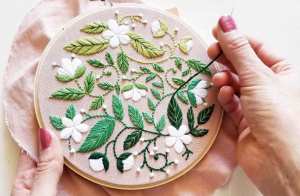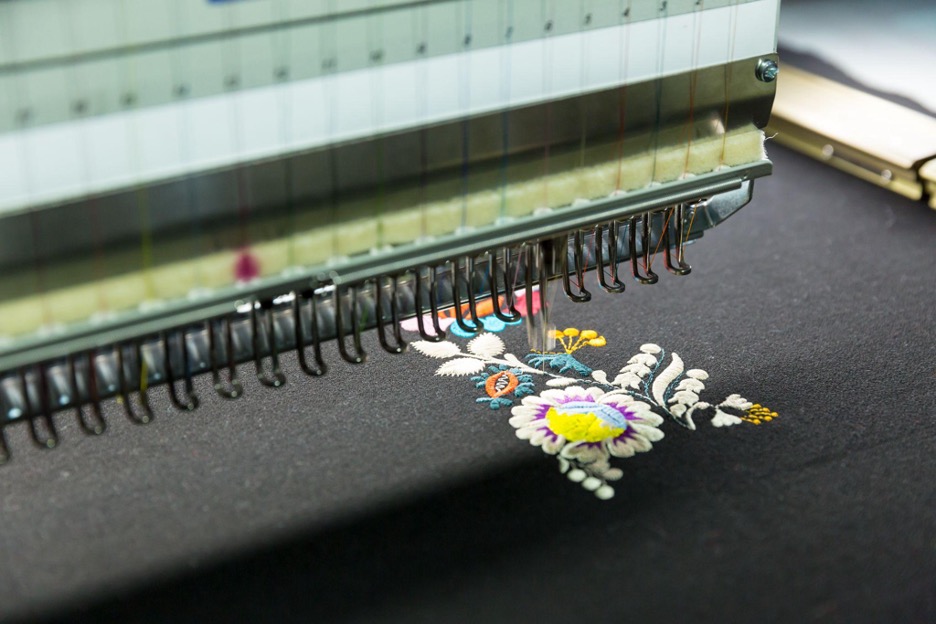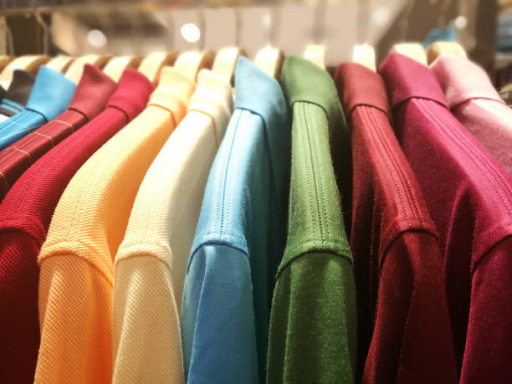Ever wanted to try your hand at embroidery needlework but weren’t sure where to begin? We’ve got you, so don’t worry! Our top pieces of advice for embroidery novices are provided below. For newbie embroiderers, we have the best tips for everything from selecting your fabric to storing your supplies. So, here are 10 top tips for embroidery beginners:
1. Select good quality fabric
This is wholly dependent on the project you’re planning. If you decide to make something that will probably need to be washed, we advise washing the fabric first before sewing into it because it may shrink afterwards. You can embroider it all from the thinnest voile to the thickest canvas (though you might need a thimble). Enjoy picking out your fabric, but start with a lighter shade to make it easier to transfer your design.
2. Use high-quality thread
Say no to low-quality threads! Cheaper threads risk tearing and breaking, and the colour may even run after washing. This is heartbreaking if you have invested hours in a piece of work. As embroidery professionals, we recommend that you work with stranded or perle cotton Anchor threads. You can trust that they are colourfast because you know you purchase high-quality goods!
3. Keep the stitching neat
Try your best to keep your stitches clean on your embroidery work’s front and back. We know this seems annoying, but it’s even more annoying when your thread develops knots and other threads start to show through a stitch. (The back will never be as tidy as the front, but try your best to keep it as tidy as possible!)
4. Fasten your thread securely
If you are embroidering something that will be worn and washed, fasten your stitches carefully and securely. In order to make any length that needs to be cut off farther away, We recommend stitching into a few stitches on the back of your work before weaving the end into the back.
5. Never twist your threads
When sewing, make sure your working thread doesn’t twist or tangle. Hold your hoop up occasionally so that your working thread and needle hang from it. They can unroll if they are bent, but be careful not to misplace your needle!
6. Use a good-quality hoop
Cheaper hoops are simply not worth the money. Spend a few extra dollars on a sturdy wooden hoop that will hold your work securely, is heavy enough, and guarantees that the fabric tension is maintained consistently around the circle. These hoops can be painted any colour and, if necessary, even used to frame your finished piece.
7. Always fasten your stitches
Once you’ve finished one area, move on to the next. In addition to keeping the back of the work neater, doing this also prevents long, dangling threads from showing through on the front, which is especially useful if you’re working on a thin or light-coloured cloth.
8. Organise your threads neatly
Keep your threads arranged neatly and out of direct sunlight since this might weaken them and increase the likelihood that they will snap when used. If you store them on card bobbins in a box, your threads will be easier to coordinate and more enticing to choose colours from.
9. Store your tools properly
In order for other members of your household to know which scissors to use, it’s a good idea to keep paper scissors, embroidery scissors, and fabric scissors separate or even label them as such. When used on paper, fabric scissors eventually will become dull. Your needles will be more difficult to thread as a result.
10. Enjoy the learning journey
You don’t need stitching skills at the Royal School of Needlework level! It only takes a few stitches to produce eye-catching results. The secret is to relax and take pleasure in this completely engrossing art!
Conclusion
Embroidery can be a fun and relaxing hobby and a rewarding skill to build. It is a marketable skill that allows you to become an entrepreneur – just look at us! While large-scale embroidery, like our business, requires an investment in quality machinery and raw materials, you can still do your smaller-scale version at home.
Start by investing in quality threads, fabric and hoop, and perhaps when you get better, you can sell your embroidery work at a local artisan market or even take personalised orders! Till then, have fun brushing up on your embroidery skill!





